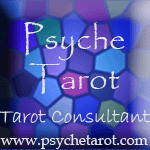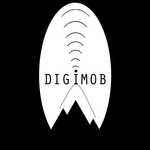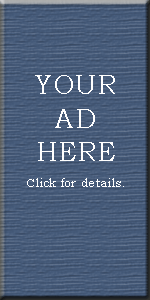Tarot for the New Aeon, by P.C. Tarantino
By Psyche | May 6, 2008

Tarot For The New Aeon: A Practical Guide to the Power and Wisdom of the Thoth Tarot
, by P.C. Tarantino
Alternative Insights Publishing, 9780976618409, 402 pp. (incl. endnotes, appendices, and bibliography), 2007
In the introduction Tarantino describes the aim of the present book, noting that “While this book respects the original spirit of Crowley’s work, it has been crafted to make his timeless illuminations readily accessible to the modern reader.”1 This sounds promising, but ultimately Tarantino cannot deliver.
Tarantino claims that tarot is “an Egyptian word meaning ‘Royal Road’”2 though this has repeatedly been demonstrated to be the strange invention of an eighteenth century Frenchman whose etymological fabrications were eccentric to say the least.
The section on tarot’s history opens in typical newage style, stating that the “origin of the tarot is shrouded in mystery”.3 No, not quite. Well, save for that shroud repeatedly tossed over it by occultists lax in their investigation of tarot’s well documented history. Indeed, there really is little excuse for any tarot book published after 1996 – when Decker, Dummett and Depaulis’s excellent work A Wicked Pack of Cards was published – to make this claim. (Of course, now, in the nills, a simple Google search would provide similar verification.)
At this point I checked the bibliography and noted that, with the exception of a few books by Joseph Campbell, the titles listed were written almost exclusively by newage writers and occultists. There is not a footnote to be seen. This did not bode well.
The founders of the Golden Dawn are cited as “Samuel Liddell Mathers, Wynn Westcott and W.K. Woodman”4. To most, these are better known as Samuel Liddell MacGregor Mathers, William Wynn Westcott, and William Robert Woodman. (To her credit, she does manage to get Aleister Crowley’s name correct.)
Descriptions of how the cards work almost always come across as flakey, and this book is certainly no exception. Tarot further viewed here as a “tool for empowerment”, which “function as an extension of your psychic awareness”.5
In the section on reading the tarot, a list of twenty-four questions is given; some open ended, others more specific. A few sample readings demonstrate how they may be used, along with descriptions of suggested spreads.
The rest of the book is broken up into three sections “Thoth Tarot Advisor”, which lists single page descriptions of the cards for upright and inverted meanings accompanied by black and white images of the cards (and, yes, the cards are pictured upright and again upside down…)
The second section, “Symbols of the Thoth Tarot”, the cards are redescribed in two pages, one with a description of the symbols and another with a list of keywords for the symbols themselves and the interpretations for the trumps and court cards, and half-page descriptions for the pips. The images are repeated here – upright only, this time.
The final section is titled “Personal Guidance Cards”. The trump cards are reinterpreted a third time for “Personality and Soul Cards”. Interpretations for the court cards are presented again for “Inner Teacher Cards”. The pips are reinterpreted for “Challenge and Opportunity Cards”. The trump cards are interpreted for a fourth time for “Growth Year Cards”. Fortunately we’re spared a fifth reinterpretation for the “Lifetime Collage”.
Unfortunately, for all the reworking of the same five or six keywords in each reinterpretation of the cards, nowhere in this book does she demonstrate any depth of understanding of what the “original spirit of Crowley’s work” entails as cited in her introduction. One gets the feeling that any deck could have been used, that it was the Thoth Tarot is only evidenced by the images depicted on the cards and the images described – her symbolic analysis bears no relation to magickal symbolism or Thelemic thought.
Tarot for the New Aeon is incredibly formulaic, unbearably repetitive, and ultimately misguided. There are no redeeming features.
Footnotes:
Related posts:
- Tarot and the myth of “bad cards”
- The premiere issue of Tarot World Magazine is out
- The Thoth Companion, by Michael Osiris Snuffin
- Top 5 Foundational Books on Tarot
- Q&A: The etymology of tarot
Comments: (2) » | Trackback
Category: Reviews
Save & Share: Del.icio.us Digg Facebook Reddit Stumble it! Twitter





Its fascinating how many views about Tarot exist and cards and books. A wealth of knowledge has percolated up through the centuries. People can use this tool to learn a lot about themselves and their energy states.
There are some things one can take liberty with, opinions can differ on reasonable interpretations, for example, but there are other things which cannot be fought from a position of reason. There was nothing reasonable about this book ;)